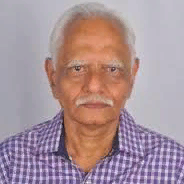
A.S. Zadgaonkar
Work place: Dr. C.V. Raman University, Bilaspur, 495113, Chhattisgarh, India
E-mail:
Website:
Research Interests: Engineering, Computational Engineering, Computational Science and Engineering
Biography
Dr. A. S. Zadgaonkar has obtained B. E. degree in Electrical Engineering from Pt. Ravishankar Shukla University, Raipur in 1965 and M. E. in 1978 from Nagpur University. The testing technique for quality of wood developed by him is included in ISI in 1979. He was awarded Ph. D. in 1986 by Pt. Ravishankar Shukla University, Raipur on ‗Investigation of Dynamic Properties of Non-Conducting Materials Using Electrical Analogy.‘ He has more than 47 years of teaching experience and has published more than 500 technical papers in various journals, and National and International conferences. He owes the credit of being the first Vice Chancellor of Dr. C. V. Raman University, Bilaspur (Chhattisgarh) and is presently serving as Advisor, Dr. C. V. Raman University, Bilaspur (Chhattisgarh). He is life member of Acoustical Society of India, Biomedical Society of India, Linguistic Society of India, Indian Society for Technical Education and many other social bodies.
Author Articles
Image Classification Using Fusion of Holistic Visual Descriptions
By Padmavati Shrivastava K. K. Bhoyar A.S. Zadgaonkar
DOI: https://doi.org/10.5815/ijigsp.2016.08.07, Pub. Date: 8 Aug. 2016
An efficient approach for scene classification is necessary for automatically labeling an image as well as for retrieval of desired images from large scale repositories. In this paper machine learning and computer vision techniques have been applied for scene classification. The system is based on feature fusion method with holistic visual color, texture and edge descriptors. Color moments, Color Coherence Vector, Color Auto Correlogram, GLCM, Daubechies Wavelets, Gabor filters and MPEG-7 Edge Direction Histogram have been used in the proposed system to find the best combination of features for this problem. Two state-of-the-art soft computing machine learning techniques: Support vector machine (SVM) and Artificial Neural Networks have been used to classify scene images into meaningful categories. The benchmarked Oliva-Torralba dataset has been used in this research. We report satisfactory categorization performances on a large data set of eight categories of 2688 complex, natural and urban scenes. Using a set of exhaustive experiments our proposed system has achieved classification accuracy as high as 92.5% for natural scenes (OT4) and as high as 86.4% for mixed scene categories (OT8). We also evaluate the system performance by predictive accuracy measures namely sensitivity, specificity, F-score and kappa statistic.
[...] Read more.Other Articles
Subscribe to receive issue release notifications and newsletters from MECS Press journals